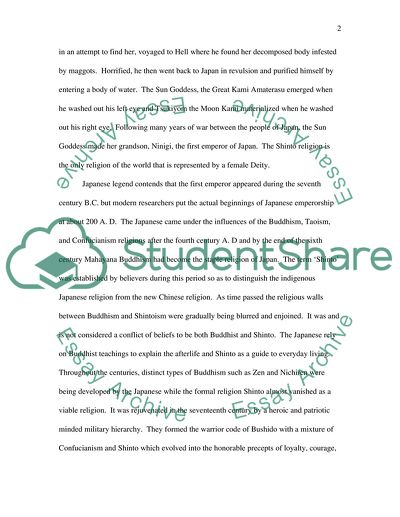Cite this document
(“Shintoism in Japan Essay Example | Topics and Well Written Essays - 1750 words”, n.d.)
Shintoism in Japan Essay Example | Topics and Well Written Essays - 1750 words. Retrieved from https://studentshare.org/religion-and-theology/1536825-shintoism-in-japan
Shintoism in Japan Essay Example | Topics and Well Written Essays - 1750 words. Retrieved from https://studentshare.org/religion-and-theology/1536825-shintoism-in-japan
(Shintoism in Japan Essay Example | Topics and Well Written Essays - 1750 Words)
Shintoism in Japan Essay Example | Topics and Well Written Essays - 1750 Words. https://studentshare.org/religion-and-theology/1536825-shintoism-in-japan.
Shintoism in Japan Essay Example | Topics and Well Written Essays - 1750 Words. https://studentshare.org/religion-and-theology/1536825-shintoism-in-japan.
“Shintoism in Japan Essay Example | Topics and Well Written Essays - 1750 Words”, n.d. https://studentshare.org/religion-and-theology/1536825-shintoism-in-japan.


